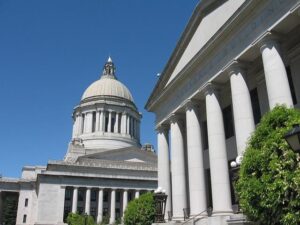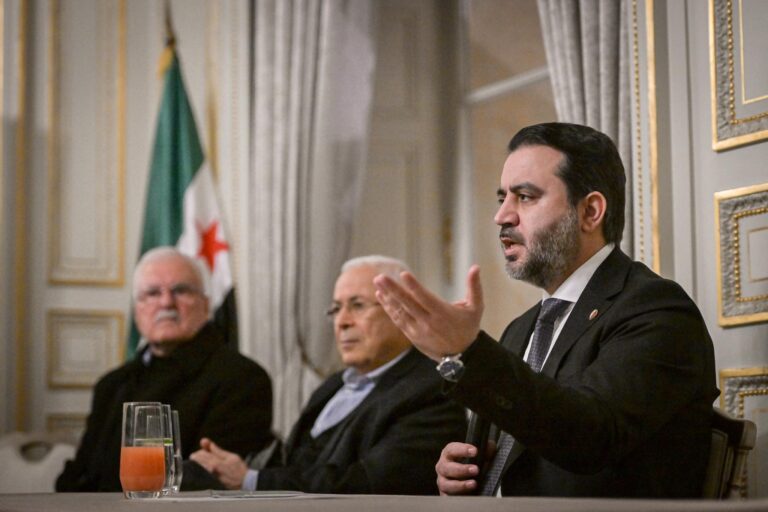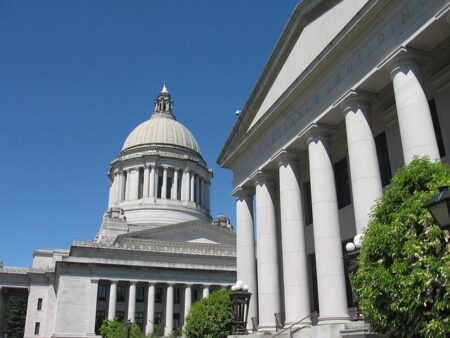U.S. Resumes Direct Dialogue with Damascus Amid Evolving Regional Dynamics
Following a prolonged period of limited diplomatic contact, the United States has opted to adjust its Syria policy by reestablishing direct communication with the government in Damascus. This strategic pivot reflects a nuanced geopolitical maneuver aimed at reconciling counterterrorism priorities with broader ambitions for regional stability. Senior U.S. officials are reportedly engaging through confidential channels to encourage cautious collaboration, while simultaneously pressing for improvements in human rights and political reforms.
Several intertwined motivations underpin this renewed U.S. involvement in Syria, including:
- Countering Iranian dominance: Curtailing TehranŌĆÖs expanding influence in Syria remains a central objective.
- Securing energy corridors: Oversight of Eastern Mediterranean hydrocarbon routes is increasingly vital for regional energy security.
- Enhancing counterterrorism efforts: Coordinated actions aim to dismantle residual extremist factions.
| Strategic Factor | U.S. Policy Response |
|---|---|
| Iranian Influence | Leveraging diplomacy and enforcing sanctions to limit TehranŌĆÖs foothold |
| Energy Security | Monitoring and securing pipeline infrastructure and maritime access |
| Counterterrorism | Collaborating with local intelligence and security forces |
Major Obstacles in SyriaŌĆÖs Political Stabilization and Economic Revival
The path toward SyriaŌĆÖs stabilization remains fraught with deep-rooted political fragmentation and economic disarray. Persistent rivalries among regime supporters, opposition factions, and foreign stakeholders continue to impede substantive reforms. Critical challenges include the reintegration of millions of displaced Syrians and the creation of a legitimate transitional government capable of uniting diverse communities. Additionally, pervasive mistrust among ethnic and sectarian groups hampers reconciliation and undermines national cohesion.
On the economic front, SyriaŌĆÖs recovery is severely constrained by the destruction of infrastructure and disrupted supply chains, leaving vast segments of the population without access to essential services. The Syrian poundŌĆÖs depreciation, coupled with inflation rates exceeding 200% in recent years, has drastically reduced household purchasing power, exacerbating humanitarian needs. While informal markets have expanded, corruption and international sanctions deter formal investment, complicating efforts toward sustainable economic growth.
- Divided political authority obstructs unified governance.
- Humanitarian emergencies intensify due to displacement and poverty.
- Economic volatility marked by hyperinflation and currency instability.
- Widespread infrastructure damage restricts access to water, electricity, and healthcare.
| Challenge | Consequences | Recommended Interventions |
|---|---|---|
| Political Fragmentation | Stalled governance reforms and policy paralysis | Facilitate inclusive political dialogues and power-sharing agreements |
| Economic Collapse | Rising poverty and hyperinflation | Implement targeted international financial aid and economic reforms |
| Infrastructure Devastation | Limited access to essential utilities and services | Develop reconstruction partnerships with transparency safeguards |
Assessing U.S. Strategic Goals and Their Regional Impact
The United StatesŌĆÖ renewed engagement with Damascus marks a strategic recalibration designed to influence SyriaŌĆÖs political future. Central to this approach is the advancement of a political transition that aligns with U.S. interests, chiefly by countering Iranian and Russian sway, fostering stability, and encouraging a negotiated settlement inclusive of opposition groups. This pragmatic strategy combines diplomatic outreach with calibrated sanctions and aid, aiming to incentivize reforms while avoiding military escalation or prolonged deadlock.
Neighboring countries remain vigilant, as shifts in SyriaŌĆÖs dynamics directly affect their security and political calculations. Nations such as Israel, Turkey, and Jordan are particularly attentive to developments that could empower hostile proxies or disrupt regional balances. The table below outlines these countriesŌĆÖ primary concerns alongside U.S. strategic priorities:
| Neighboring State | Primary Concern | U.S. Strategic Aim |
|---|---|---|
| Israel | Preventing Iranian military entrenchment near its borders | Maintain diplomatic and economic pressure on IranŌĆÖs Syrian network |
| Turkey | Limiting Kurdish autonomous zones along its frontier | Enhance counterterrorism collaboration and border security |
| Jordan | Managing refugee influx and safeguarding border stability | Support humanitarian aid and regional stability initiatives |
- Strategic realignment seeks to integrate Syria into a comprehensive regional security framework.
- Diplomatic efforts focus on incremental concessions from Damascus while isolating destabilizing forces.
- Multilateral partnerships with regional stakeholders are critical to mitigating conflict spillover.
Policy Proposals to Support SyriaŌĆÖs Sustainable Stability
To prevent SyriaŌĆÖs tentative progress from unraveling, the U.S. must pursue a balanced strategy that combines firm pressure with constructive engagement. Emphasizing inclusive political processes and endorsing authentic power-sharing frameworks can help bridge entrenched divides. This entails bolstering local governance capacities that promote community resilience and gradually rebuild intercommunal trust. Economic incentives linked to measurable reform milestonesŌĆösuch as restoring essential services and enhancing governmental transparencyŌĆöshould be prioritized to maintain reform momentum.
Furthermore, Washington should intensify collaboration with regional partners and international bodies to harmonize efforts and reduce conflicting agendas. Key focus areas include:
- Humanitarian relief: Guaranteeing aid delivery to vulnerable groups free from political manipulation.
- Counterterrorism coordination: Preventing extremist resurgence while respecting SyriaŌĆÖs sovereignty.
- Reconstruction initiatives: Promoting transparent infrastructure investment to minimize corruption risks.
| Policy Domain | Primary Focus | Anticipated Result |
|---|---|---|
| Political Reform | Establishing inclusive dialogue platforms | Mitigation of factional conflicts |
| Economic Assistance | Conditional aid tied to reform benchmarks | Progress in reconstruction and service restoration |
| Security Collaboration | Joint counterterrorism initiatives | Prevention of destabilizing activities |
Final Thoughts
As the United States renews its engagement with Damascus amid a complex and shifting geopolitical environment, the upcoming period will be decisive for SyriaŌĆÖs fragile transition. WashingtonŌĆÖs strategy reflects a blend of diplomatic pragmatism and strategic caution, shaped by broader regional interests and persistent on-the-ground challenges. The international community will be closely observing whether this renewed dialogue can catalyze substantive progress or merely highlight the enduring complexities of SyriaŌĆÖs conflict. The ramifications of this high-stakes engagement will resonate far beyond SyriaŌĆÖs borders, influencing the stability and security of the entire Middle East region.







